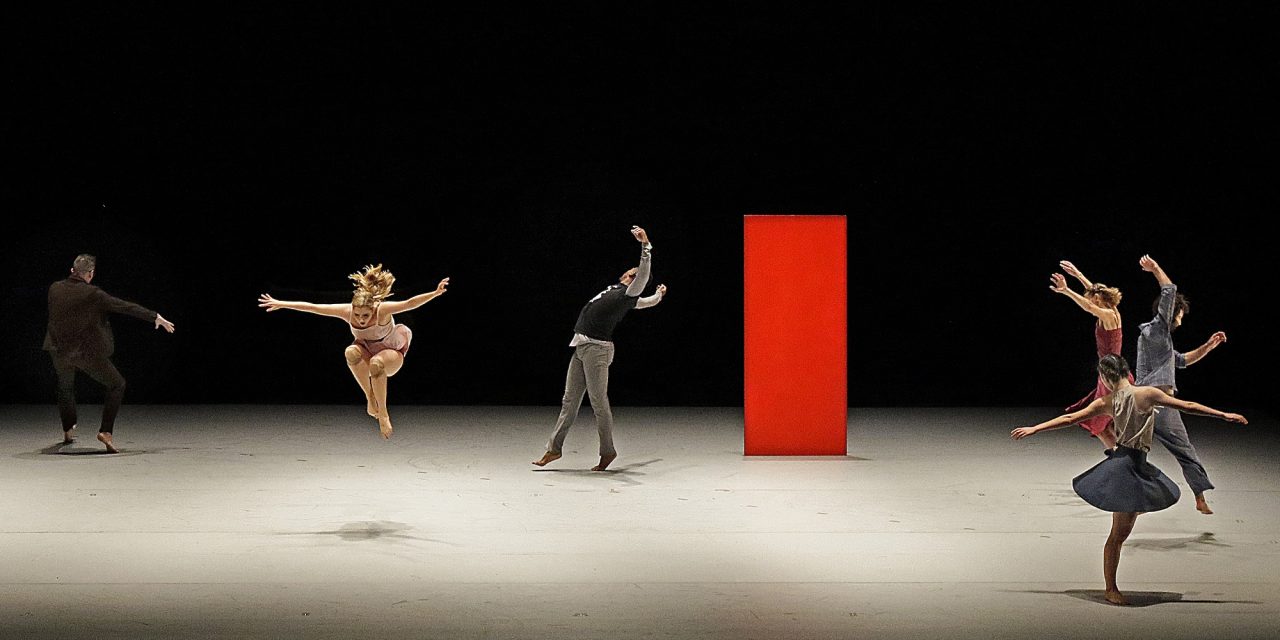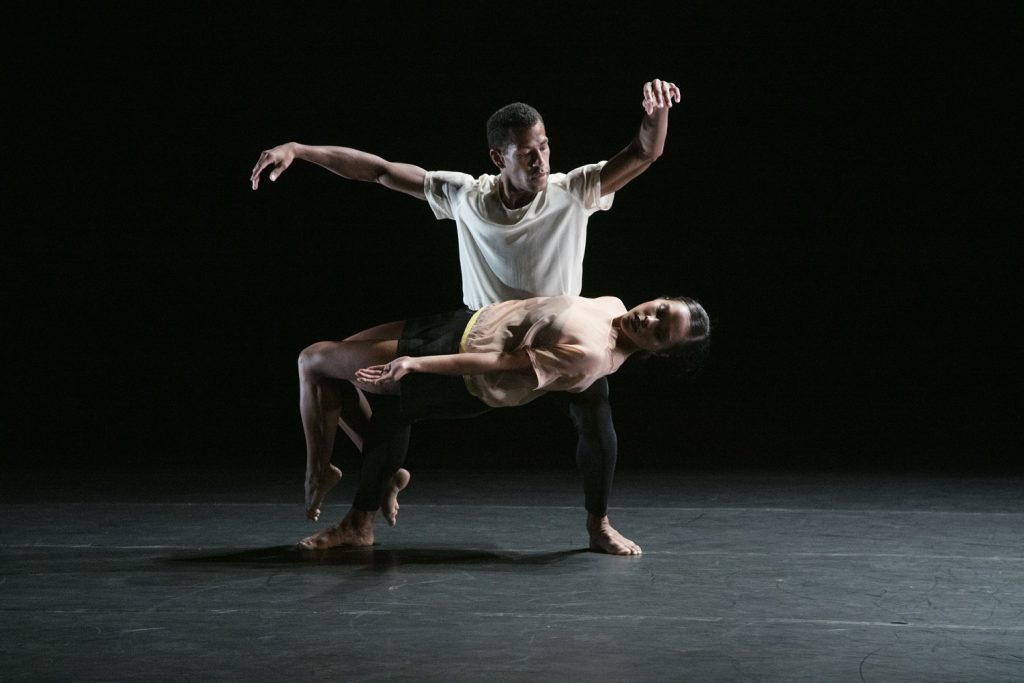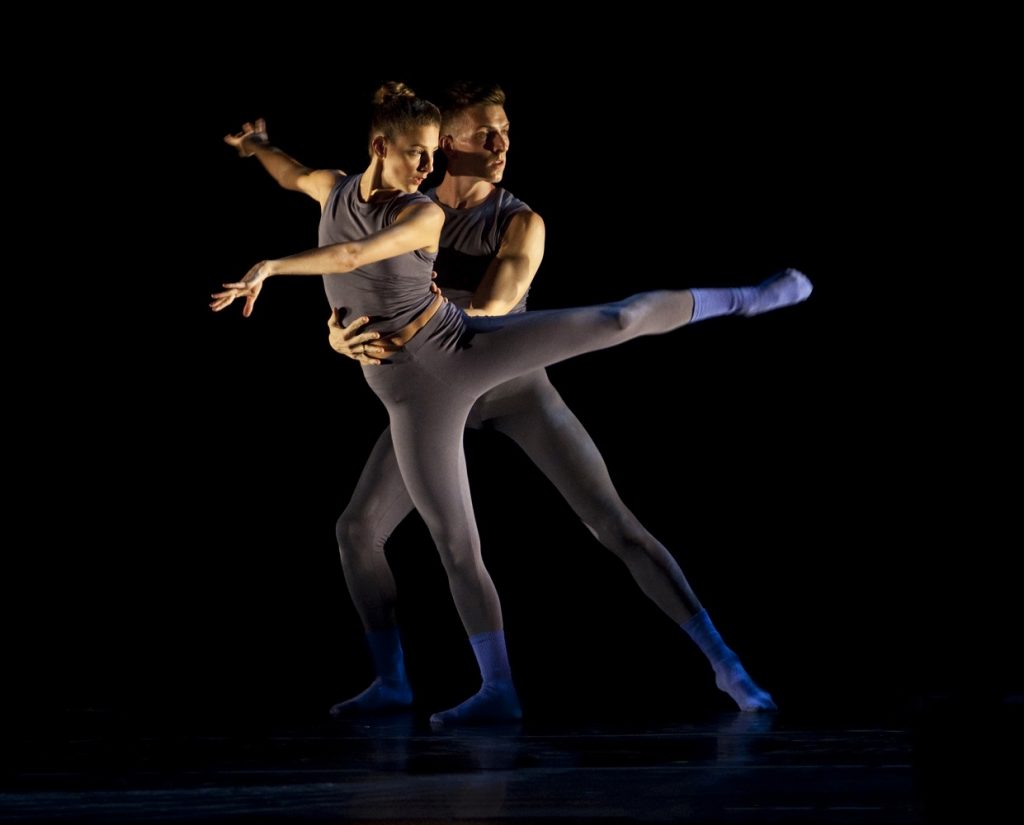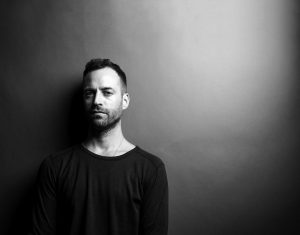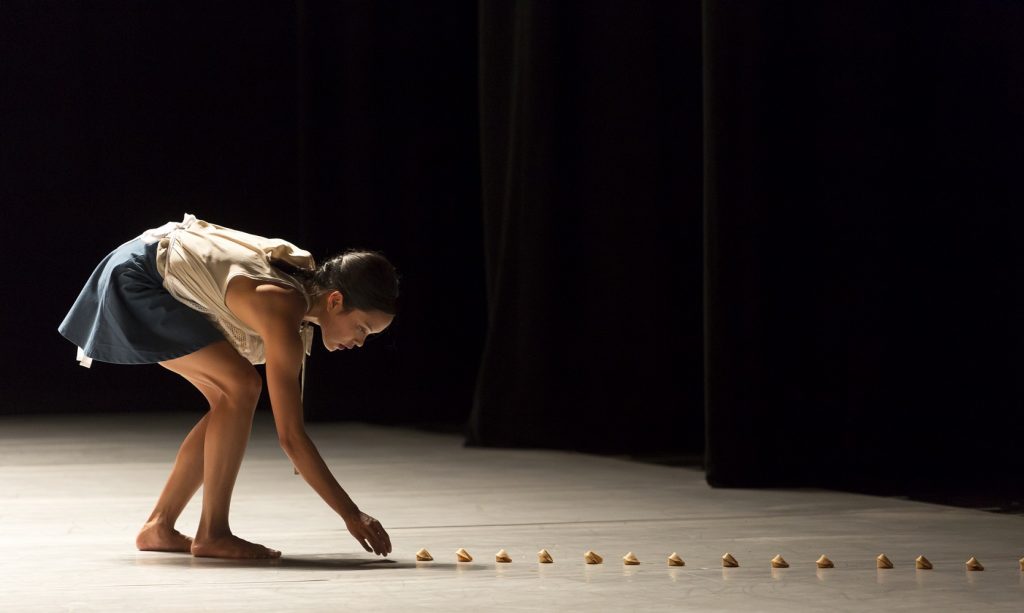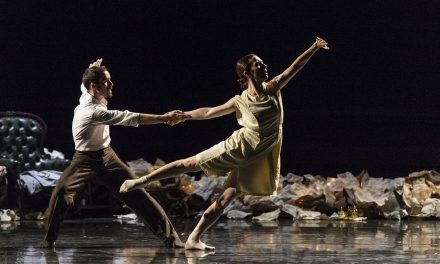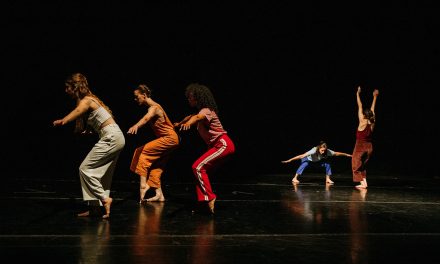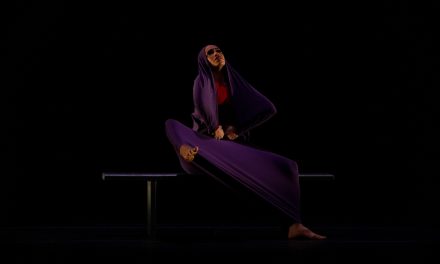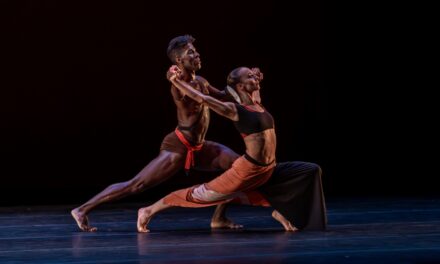Along with Martha Graham Duets, L.A. Dance Project, led by Artistic Director Benjamin Millepied presented three Los Angeles premieres at the Wallis Annenberg Center for the Performing Arts. Two of these works, Helix by Justin Peck and Yag by Ohad Naharin were outstanding, but Millepied’s Sarabande brought little that was new or innovative to the stage. All four works, however, were performed by highly versatile and talented dance artists.
Coincidentally, I recently had the opportunity to watch a film, The Sacrosanct Accompanist, that highlighted the Martha Graham technique. Although the six dancers in Martha Graham Duets performed with great skill, only two, Patricia Zhou and David Adrian Freeland Jr., came close to executing Graham’s very distinct modern dance style. They each conveyed the Graham sense of movement weight and embodied the strength behind Graham’s contractions; something that is difficult if one has not studied the Graham or Lester Horton techniques.
The dancers were beautifully costumed by Janie Taylor; the women in beige and black with the men in white and black. Without seeing what dance context these duets occurred in, it is impossible to fully appreciate the amazing talents of Ms. Graham. But, as with quoting a famous and poignant passage from a well-written novel, it was wonderful to see them performed.
Helix is a work that had my attention from beginning to end. One definition of the word helix that seems to fit choreographer Justin Peck’s work is “an object having a three-dimensional shape like that of a wire wound uniformly in a single layer around a cylinder or cone, as in a corkscrew or spiral staircase.” The dance began with three duets filled with beautiful lifts that circled and spiraled overhead or down into the ground. As it progressed, Helix became faster and faster, the turns, jumps and footwork accelerating. Movement phrases performed in canon that spiraled around the space while each dancer did so around themselves.
Costumed by Janie Taylor in simple grey tights and leotards with bright blue socks, Helix is an energy tour-de-force for the cast of six. Daisy Jacobson and Rachelle Rafailedes performed consistent double tour en l’airs across the stage with stunning accuracy, and Axel Ibot performed with great clarity. A series of tableaux briefly broke the pace, but even there, the shifts between poses were lighting fast. Helix came to a movement crescendo with fast, almost frenzied solos that crashed to the floor. The audience’s cheers came as quickly and continued for some time.
The lighting by Brandon Sterling Baker was wonderful in how it shifted between sections without interrupting the increasing speed of the dance. The compelling and driving score was Helix, composed by Esa-Pekka Salonen.
What makes Sarabande enjoyable to watch is the talent on the stage. The dancers are skilled technicians and strong performers. The live music was also a plus. First Aaron Carr performed two solos to excerpts from Partita for Solo Flute in A Minor as performed by flutist Devan Jaquez. The remainder of the work was danced to Sonatas and Partitas for Solo Violin as performed by violinist Fabiola Kim.
There is no question that the choreography by Benjamin Millepied is well crafted. He is a master a stringing beautiful movement phrases together that tickle the senses, but Sarabande was thick with movement clichés and passé ideas. The costumes designed by Paul Cox; checkered red and white or green and white shirts with ill-fitting pants not only distracted from the work but did nothing to flatter the dancers’ bodies. The very talented cast included Aaron Carr, Kaitlyn Gilliland, Axel Ibot and Francisco Mungamba.
Ohad Naharin has created an incredibly surreal work that continues to distort one’s sense of reality with his 1996 work entitled Yag. Naharin was the artistic director of Batsheva Dance Company from 1990 to 2017 and is the subject of the beautiful documentary Mr. Gaga. Yag is rich with verbal symbolisms about one family’s lineage. The phrase, “At one time, my family loved; really loved; really, really loved to dance!” repeats throughout the work. The characters reveal their first names, Daisy, David and Patricia and that their grandfather and parents are dead. A red board becomes a revolving door, a dressing room and a coffin in which the dead husband laughs hysterically while his family dances nearby.
Patricia Zhou methodically placed fortune cookies on a diagonal across the stage only to have the three men slowly trod on and crush them. The wife/mother took on the role, and clothing, of her deceased husband, family dynamics were slowly revealed as the work progresses. It was not clear exactly what this family was going through, but Yag is a visual treat and an intriguing psychological puzzle to try and unravel.
The cast of Yag included Aaron Carr, David Adrian Freeland Jr., Daisy Jacobson, Nathan Makolandra, Rachelle Rafailedes, and Patricia Zhou. Costume Design was by Eri Nakamura, Lighting by Avi Yona Bueno and the music ranged from pop to classical to opera.
For more information on L.A. Dance Project, click here.
Featured Photo: L.A. Dance Project performing at the Wallis – Photo: Lawrence K. Ho

